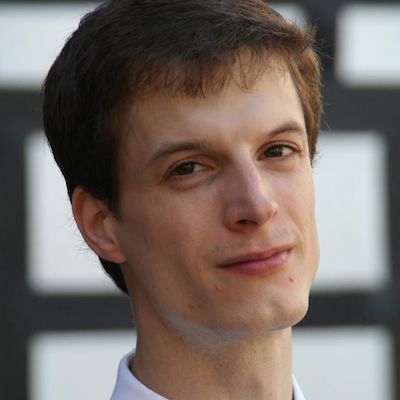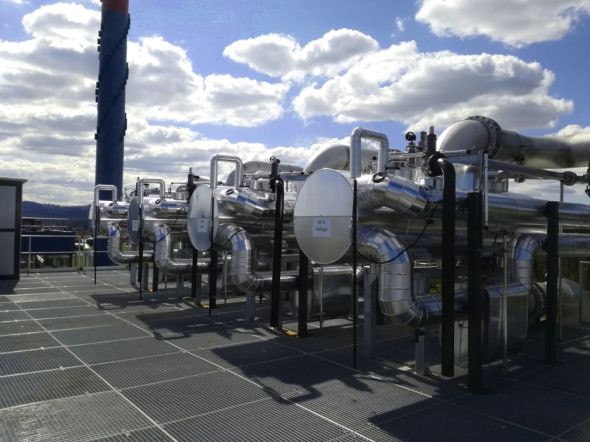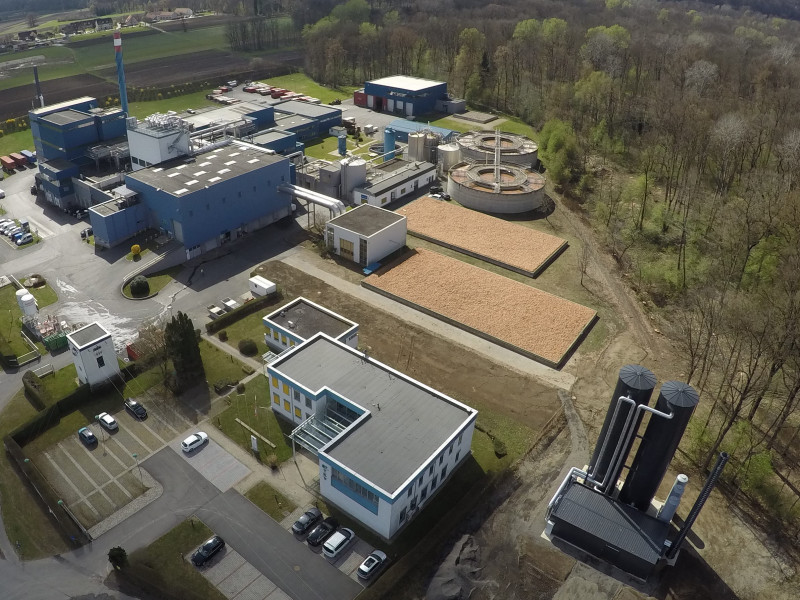ThermaFLEX: Thermal demand and supply as flexible elements of future sustainable energy systems
Mehr Flexibilität für mehr Erneuerbare in der netzgebundenen Wärmeversorgung – das Leitprojekt „ThermaFLEX“
Ausgangslage
Bei aktuellen Diskussionen um die Dekarbonisierung der Energieversorgung ist vielen nicht bewusst, dass der Bedarf für Raumklima und Warmwasser z.B. im Jahr 2019 rund 27% des Gesamtenergiebedarfs Österreichs ausgemacht hat1. Ein Viertel davon wird über netzgebundene Wärmeversorgung bereitgestellt, womit der Nah- und Fernwärmesektor eine zentrale Rolle in der Energieversorgung Österreichs spielt.
Dessen Entwicklung in Richtung mehr Nachhaltigkeit wird zu einer erhöhten Systemkomplexität führen durch:
- die Integration großer Anteile an erneuerbaren, mitunter volatilen Energieträgern,
- Sektorkopplung mit dem Strom- und Gasnetz,
- dezentralisierte Energieumwandlungsstrukturen.
Gleichzeitig müssen aber die Versorgungssicherheit gewahrt die Energiekosten für die Endkunden erschwinglich bleiben. Das kann nur durch eine erhöhte Flexibilität des Gesamtsystems und ein intelligentes Zusammenspiel der Elemente erreicht werden.
Das Projekt ThermaFLEX
Genau damit beschäftigt sich das Leitprojekt „ThermaFLEX“2 innerhalb der Vorzeigeregion „Green Energy Lab“3. Nicht weniger als 27 Projektpartner (Fernwärmenetzbetreiber, Technologieanbieter und Forschungseinrichtungen) bearbeiten die Identifikation, die simulationsgestützte Planung und Bewertung von Flexibilisierungsmaßnahmen. Konkrete Umsetzungen werden langfristig beobachtet und optimiert. Im Fokus stehen dabei sieben Demonstratoren in Fernwärmeversorgungsgebieten von kleinen, mittleren und großen Städten.
Unsere Rolle im Projekt
Die BEST – Bioenergy and Sustainable Technologies GmbH ist maßgeblich für den optimierten Betrieb des Zusammenschlusses mehrerer kleinerer Nahwärmenetze im Demonstrator „100% Renewable District Heating Leibnitz“4 verantwortlich.
Dabei geht es darum, Abwärme aus einer Tierkörperverwertung optimal nutzbar zu machen, indem zu Zeiten mit Überschuss benachbarte Nahwärmenetze mitversorgt werden. Steht hingegen nicht genug Abwärme zur Verfügung, soll ökologische Wärme aus Biomasse aus anderen Netzen den Einsatz des fossilen Spitzenlastkessels vermeiden helfen.
Die optimale Bewirtschaftung der thermischen Speicher in jedem Netzwerk erfordert Prognosemethoden, um den erwarteten Verbrauch sowie die zur Verfügung stehende Abwärme abschätzen zu können. Darauf aufbauende Optimierungsalgorithmen stellen sicher, dass nicht zu wenig oder unnötig viel Wärme zwischen den Netzwerken ausgetauscht und der Betrieb sowohl ökologisch als auch für beide Betreiber ökonomisch optimiert wird.
______________________________________________________________________________
2 https://thermaflex.greenenergylab.at/thermaflex/
4 https://greenenergylab.at/projects/100-renewable-district-heating-leibnitz/
Weitere Informationen
https://thermaflex.greenenergylab.at/
https://greenenergylab.at/projects/thermaflex/
Presseaussendung
https://www.best-research.eu/webroot/files/file/20211007_Pressetext_Thermaflex%20(002).pdf
Projektvolumen
EUR 4,578.347,--
Projektlaufzeit
2018-11-01 - 2022-11-01
Finanzierung
FFG Programm “Vorzeigeregion Energie” als Initiative des Klima- und Energiefonds Österreich und des Bundesministerium für Verkehr, Innovation und Technologie
Projektpartner
AEE INTEC (Koordinator)
FH JOANNEUM www.fh-joanneum.at
StadtLABOR Innovationen für urbane Lebensqualität GmbH www.stadtlaborgraz.at
Technische Universität Graz - Institut für Wärmetechnik www.tugraz.at
Stadtwerke Gleisdorf GmbH www.stadtwerke-gleisdorf.at
S.O.L.I.D. Gesellschaft für Solarinstallation und Design m.b.H. www.solid.at
WIEN ENERGIE GmbH www.wienenergie.at
Technische Universität Wien - Institut für Energiesysteme und Elektrische Antriebe www.tuwien.at
Feistritzwerke-STEWEAG-GmbH www.feistritzwerke.at
JOANNEUM RESEARCH Forschungsgesellschaft mbH www.joanneum.at
AIT Austrian Institute of Technology GmbH www.ait.ac.at
Salzburg AG für Energie, Verkehr und Telekommunikation www.salzburg-ag.at
Rotreat Abwasserreinigung GmbH www.rotreat.at
SIR – Salzburger Institut für Raumordnung und Wohnen www.salzburg.gv.at/sir
Alois Haselbacher Gesellschaft m.b.H. www.haselbacher.at
Energie Steiermark AG www.energie-steiermark.at
Horn Consult
ENAS Energietechnik und Anlagenbau GmbH www.enas.at
Pink GmbH www.pink.co.at
GREENoneTEC Solarindustrie GmbH www.greenonetec.com
STM Schweißtechnik Meitz eU www.stm-meitz.at
Green Tech Cluster Styria GmbH www.greentech.at
FRIGOPOL Kälteanlagen GmbH www.frigopol.com
Abwasserverband Gleisdorfer Becken www.awv-gleisdorf.at
Schneid Gesellschaft m.b.H. www.schneid.at
Nahwärme Tillmitsch GmbH & Co KG www.haselbacher.at/nahwaerme
Ansprechperson

Daniel MUSCHICK
daniel.muschick@best-research.eu
Area Management

Markus GÖLLES
markus.goelles@best-research.eu
Publikationen
Betrieb verbundener Nahwärmenetze mit getrennten Eigentümern
Operation of Coupled Multi-Owner District Heating Networks via Distributed Optimization
Operation of coupled multi-owner district heating networks via distributed optimization
Optimal operation of cross-ownership district heating and cooling networks
Distributed Optimization Methods for Energy Management Systems


